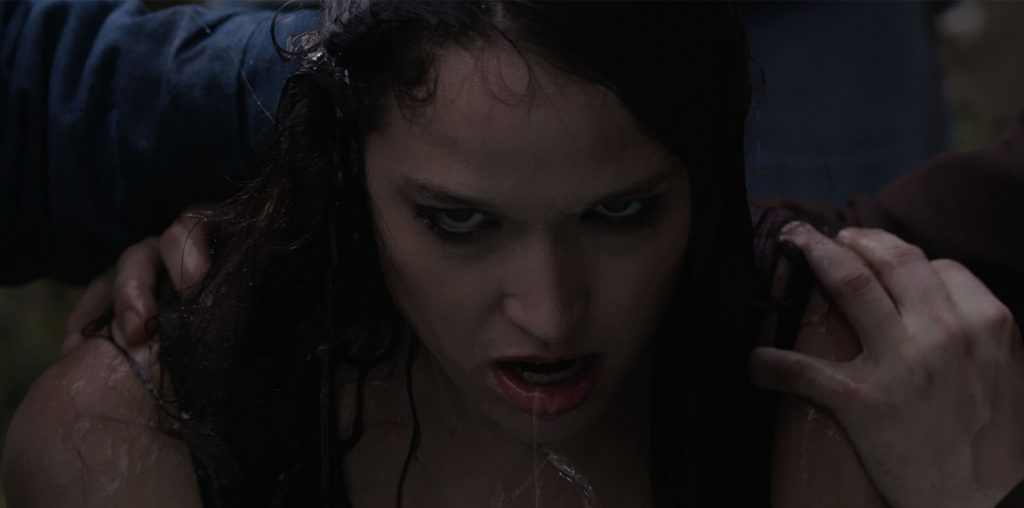
Mom and dad seem really strange to a rebellious teen once he reaches thirty. The lame authority figures now seem so familiar, after we become like our parents. This truth often acknowledged may make for an interesting documentary, perhaps equally comic as it would be perceptive. But when a filmmaker can look to his father in true wonderment, we have something strange and profound.
Filmmaker Jeremiah Zagar has such a situation, as the son of Philadelphia mural artist Isaiah Zagar. In the beautifully rendered documentary “In a Dream,” now on DVD, Jeremiah films his father’s artwork and process as if still awestruck by his childhood hero. This style shows more than the filmmaker’s admiration – within the film lurks a mystery. For the rest of us – the children of ordinary folk – even we find enigmas in our parents. Zagar’s film proves universal while so unique.
It’s hardly surprising that the elder Zagar could be enigmatic to his own son. Isaiah has produced hundreds of murals in Philadelphia – if you have traveled through the South Street area on foot, chances are you’ve paused to admire one; or if you passed through by car or bus, one of his works has grabbed your eye to flash its fragmentary ebullience into it. Isaiah works with fragments – pottery, cut mirror, other objects – and by cementing them to a wall constructs vast mosaics of simple yet distinct imagery. Self portraits often appear, as do faces and bodies. Sometimes the artist fashions sweeps and curls that reveal an abstract je ne sais quoi.
Jeremiah Zagar films his father mixing cement with paint (for a vibrant base), then prepping and applying his materials. We see the younger Zagar feeling out his father’s workmanship with the camera – the filmmaker knows the process well and joys at presenting it to us. One look at artwork so distinct, so time-demanding, we wonder straight away if it’s the product of an eccentric. A few minutes with the otherworldly Isaiah addressing the camera suggests that he may have been an outsider artist before the term was mainstreamed – his sense of isolation while at work shows as much. Though ironically enough, the artist is causally engaging to passersby who admire his work. It’s as if he channels his eccentricities into his long workdays, which begin in the early hours, so he can live sanely the rest of the time. Wonderfully for him, he’s made his passion into a living – by purchasing properties, rehabbing them with his art, then renting them out – and fashioned his own personal American Dream. If able to see Zagar’s courtyard, William Blake would fondly admire his descendant’s own private Garden of Eden.
Isaiah’s “garden” extends into his home, which he has decorated inside and out – from the porch to the kitchen and bathtub. He shares this blissful universe with his wife, Julia, whom he met when both were young artists in New York. She comes off as a down-to-earth Brooklyn gal, her care for her husband stronger than any reservations she may have about him. As the film details their history, she appears as the real cement behind Isaiah. She had supported him through some of the worst, which we suspect has happened before the film reveals it: Isaiah’s late-20s breakdown and institutionalization.
This dark moment turns into a new light, as elder son, Zeke, was conceived right when Isaiah returned home. A bohemian hipster who seems happy for a time, Zeke hits hard times when his wife and son leave him. The parents’ worse fears come true when Zeke needs to be institutionalized for substance abuse – the dread that the burden of the father has fallen unto the son. In this sense, Zeke is the child who may identify with the father, though Zeke couldn’t create a world safe for his own survival, as did his did.
“In a Dream” comes off as a tale about an odd family that’s making good. But the filmmaker throws in narrative conflict, when we learn Isaiah has come too close to one of his female assistants. Mad and passionate, he reacts childishly when dealing with the problem and blurting the truth out to Julia at a Philly diner. We see the same passionate rage about life in the film’s opening minutes, when Isaiah relates his artistic intentions to investigate the essence of “everything” – the word coming out in an impetuous shout.
“In A Dream” looks into Isaiah’s early life and reveals a life-altering experience – we wonder about its impact as much as the filmmaker does. While harping on the tortured artist, the film essentially celebrates his art, how it thrills, inspires, endures as a part Philadelphia’s personality. Fittingly enough, Jeremiah Zagar’s direction captures the magnificence of the artwork. A second or third viewing may put the filmmaking techniques into plain sight: the use of slo-mo, time-lapse, and approaching shots of a posing Isaiah, the master before one of his masterpieces. The elements hum together into a glorious nonfiction experience, with its narrative as captivating as its visualization.
The standard DVD set (a deluxe limited edition is also available) includes earlier short films by Jeremiah, each on a turning point in Isaiah’s life. “Paints on a Ceiling” is notable, as it relates to a childhood event that expanded his artistic expression. But the most moving is “Coney Island, 1945,” about more than just the beach Isaiah regularly visited with his mother. In voiceover and in headshot commentary, Isaiah recalls when his feet first touched the ocean water, and his body exuded continual screams – not in terror, but in sheer delight of his swelling emotion, a feeling that would fuel his life’s work. Jeremiah uses dramatization of a blond child tastefully, and filming in a style similar to the feature, the short works well as an antecedent/companion piece. When life is full of art, I bet it would seem like a dream. We should celebrate the fact that Jeremiah realized this and could realize it onscreen.

